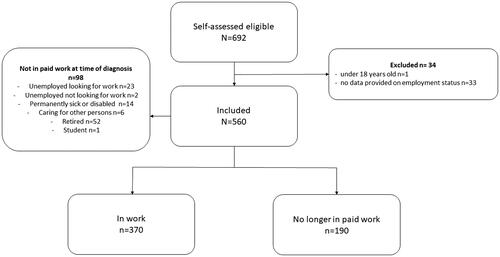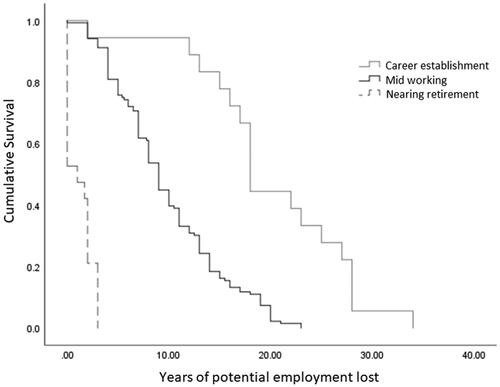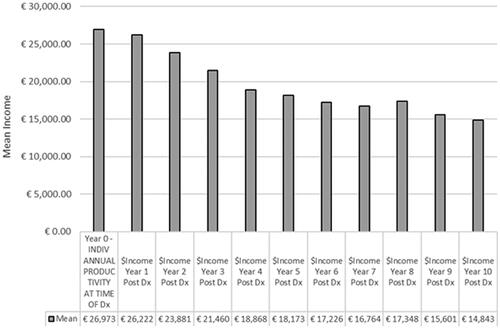Figures & data
Figure 1. Participant flow.

Table 1. Comparison of participants in work to those no longer in paid work.
Figure 2. Kaplan–Meier’s curve of estimate average years of lost potential employment according to age at diagnosis.

Table 2. Comparison between ages categories of factors associated with leaving work and factors that may have support remaining in work.
Figure 3. Economic evaluation participant classification over time horizon.


